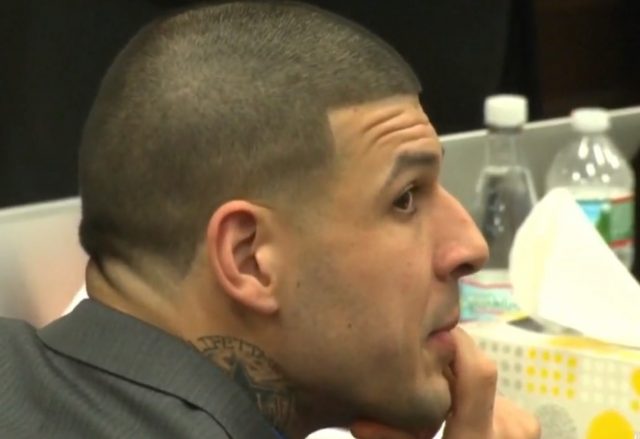 One of the instructions the judge in the Aaron Hernandez double murder trial promised to read to the jury is a so-called “Bowden Instruction.”
One of the instructions the judge in the Aaron Hernandez double murder trial promised to read to the jury is a so-called “Bowden Instruction.”
It comes from Commonwealth v. Bowden, a 1980 Massachusetts case where a trial judge prevented a defendant from arguing that the police messed up his case by failing to conduct certain scientific tests and by failing to collect certain evidence. The defendant tried to show that the police investigation lacked integrity in an effort to raise reasonable doubt.
The trial judge in Bowden wouldn’t let the defendant go there. He said:
“[I]t is my observation in the course of the trial . . . that you have undertaken a line of cross-examination with several witnesses, asking them were these tests performed, and were those tests performed, and so on and so forth. . . . I would hope that . . . you are not going to argue that type of questioning has any probative value because I am certainly going — if you do — I am certainly going to instruct the jury that no evidence is exactly that. No evidence. . . . I don’t think you can say that a lack of evidence exists primarily because something wasn’t done scientifically. That’s the point I am trying to make to you.”
The defendant was convicted and filed an appeal. The Massachusetts Supreme Court ruled that the above statement to be reversible error. The justices threw out the conviction and stated:
“The failure of the authorities to conduct certain tests or produce certain evidence was a permissible ground on which to build a defense in the circumstances of this case. The fact that certain tests were not conducted or certain police procedures not followed could raise a reasonable doubt as to the defendant’s guilt in the minds of the jurors. The judge should not have removed this evidence from the jury’s consideration, and in so doing invade the province of the jury to decide what inferences to draw from certain evidence.”
This gave rise to the “Bowden Instruction.”
It’s easy to see the parallels to the Aaron Hernandez case. The Hernandez defense team has argued that police failed to collect video evidence of the spilled drink inside the Cure night club which prosecutors say enraged the defendant to the point he resorted to murder. The defense team has argued that video evidence wasn’t handled according to standard protocol. The defense has also argued that the street sweeper who went through the crime scene may have destroyed evidence. The defense team has argued that video from near the crime scene of a silver SUV similar to the one owned and allegedly driven by Aaron Hernandez is inconclusive. The defense has argued that police didn’t even link Hernandez to the crime until a gun recovered from a car accident nearly a year after the double murder was tested for forensics and magically “matched” the bullets recovered from the murder scene. The driver of the car grew up in Hernandez’s hometown and was friends with a group of football players, but the defense team has argued that the connection is tenuous at best. The defense will likely exploit testimony provided by the state’s key witness, Alexander Bradley, stating that the murder weapon was tossed out of the window after the double murder. Bradley also stated that the gun used to commit the crime was not the same type of gun found in the trunk of the car. The defense has also questioned why the police recovered five bullets from the scene. Several witnesses thought they heard six shots.
The Massachusetts District Court Model Jury Instructions on the matter read as follows. The judge in the Hernandez trial may use these instructions or may use a modified version of them.
You have heard some evidence suggesting that the Commonwealth did not conduct certain scientific tests or otherwise follow standard procedure during the police investigation.
This is a factor you may consider in evaluating the evidence presented in this case.
With respect to this factor, you should consider three questions:
- First: Whether the omitted tests or other actions were standard procedure or steps that would otherwise normally be taken under the circumstances
- Second: Whether the omitted tests or actions could reasonably have been expected to lead to significant evidence of the defendant’s guilt or innocence; and
- Third: Whether the evidence provides a reasonable and adequate explanation for the omission of the tests or other actions.
If you find that any omissions in the investigation were significant and not adequately explained, you may consider whether the omissions tend to affect the quality, reliability or credibility of the evidence presented by the Commonwealth.
All of these considerations involve factual determinations that are entirely up to you, and you are free to give this matter whatever weight, if any, you deem appropriate based on all the circumstances.
The jury instructions go on to state that the Bowden instruction is “optional, but preferable.”